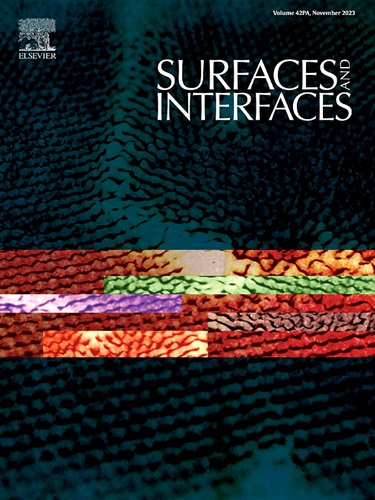Efficient screening and influencing effect of superior catalysts among TM@Janus WSSe for CO2RR to various C1 products
IF 5.7
2区 材料科学
Q2 CHEMISTRY, PHYSICAL
引用次数: 0
Abstract
The electrochemical reduction of carbon dioxide (CO2RR) can efficiently convert CO2 into high-value products and develop renewable energy resources, in which the catalysts play vital role to enhance the efficiency. A variety of SACs by anchoring 28 transition metal (TM) atoms on Se-monovacant Janus WSSe monolayer (TM@J-WSSe) are designed. An efficient "four-step" screening scheme is proposed to select potential CO2RR catalysts. The optimal reaction pathways toward CO, HCOOH, CH3OH and CH4 are picked out from all possible pathways, and the most potential catalysts are (Os, Cu, Mn, Cr)@J-WSSe with limiting potentials of -0.34 V, -0.39 V, -0.54 V and -0.41 V, respectively, under implicit solvation model. The Faraday efficiency values of four catalytic products are 99.91%, 95.75 %, 100 % and 99.07 %, respectively. The Cr@J-WSSe exhibits a dynamic cyclic behavior compared with (Os, Cu, Mn)@J-WSSe by holding the initial and final TM active site. Moreover, different constant electrode potentials do not change the potential determining step (PDS) of Cr@J-WSSe, although slightly alter the UL values. The catalytic mechanism is expounded by electronic properties of Cr@J-WSSe. The electron transfers along the route of moiety 1→2→3, where moiety 2 acts as an intermediary transmitter when the electrons are transferred from electron reservoir to receiver.
This work facilitates the systematic understanding of the catalyst design and activity regulation, moreover, it paves an efficient way for experimental preparations.

求助全文
约1分钟内获得全文
求助全文
来源期刊

Surfaces and Interfaces
Chemistry-General Chemistry
CiteScore
8.50
自引率
6.50%
发文量
753
审稿时长
35 days
期刊介绍:
The aim of the journal is to provide a respectful outlet for ''sound science'' papers in all research areas on surfaces and interfaces. We define sound science papers as papers that describe new and well-executed research, but that do not necessarily provide brand new insights or are merely a description of research results.
Surfaces and Interfaces publishes research papers in all fields of surface science which may not always find the right home on first submission to our Elsevier sister journals (Applied Surface, Surface and Coatings Technology, Thin Solid Films)
 求助内容:
求助内容: 应助结果提醒方式:
应助结果提醒方式:


